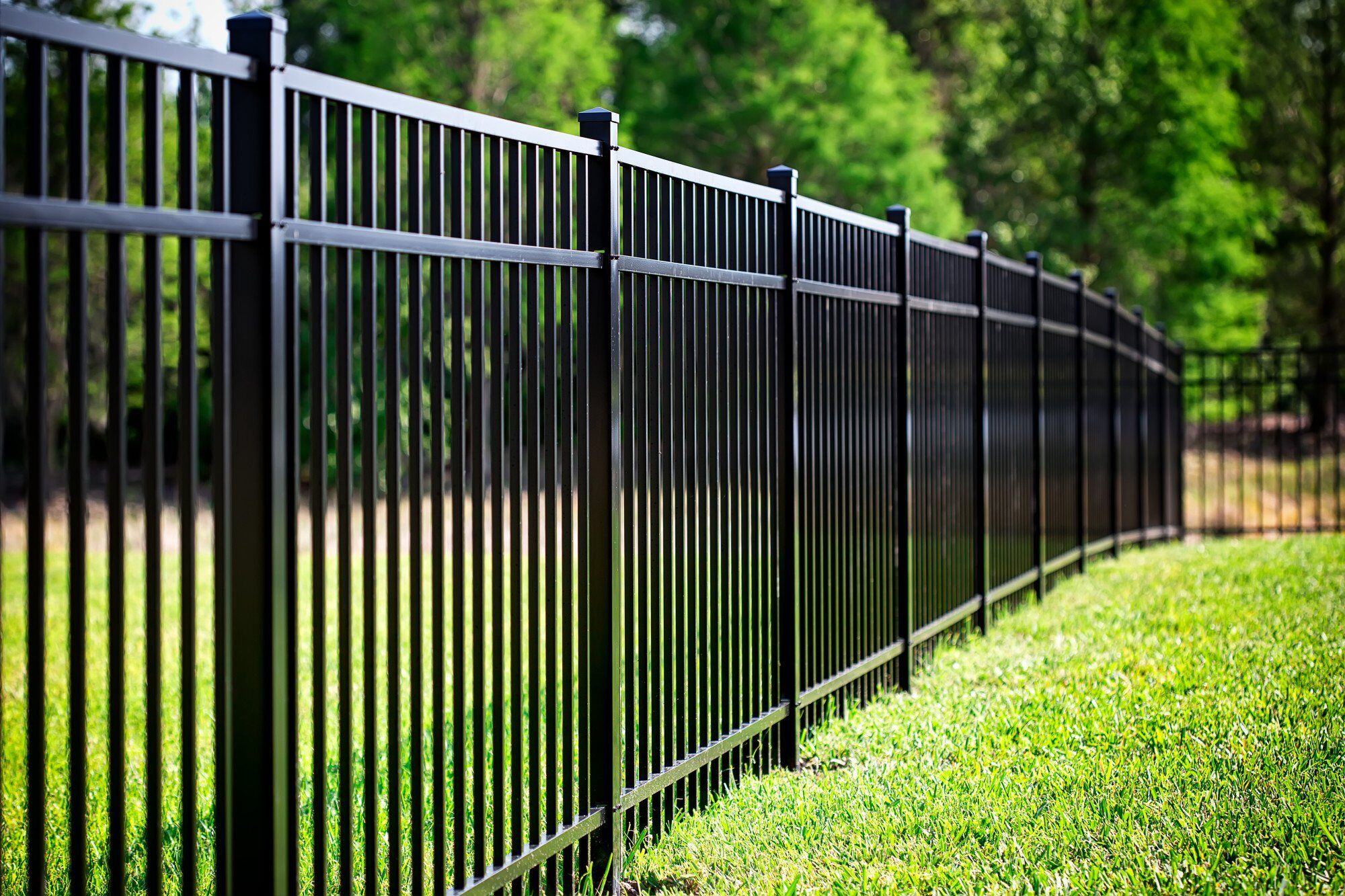All Categories
Featured
Installing a fence on your property can dramatically boost its look, rise safety, and give personal privacy. Nonetheless, the installment procedure calls for correct preparation and preparation to guarantee it goes smoothly and avoids problems. Whether you're a first-time fencing installer or have previous experience, this overview will stroll you via how to prepare your property successfully for fence installation.
In many situations, you'll require to acquire a license from your regional city or region prior to beginning your fencing installment. Make certain to consult your local zoning office to determine the certain regulations and permit needs in your area. Not sticking to these guidelines might lead to fines or being needed to remove the fence.
![]()
When setting up a fencing near a shared home line, make sure to communicate with your neighbors about your strategies. A pleasant discussion can help make sure and protect against possible disputes everyone gets on the very same page regarding the fencing's location and design.
Clearing up the area makes certain that the installment staff can access the space efficiently and lowers the risk of damages to existing plants. Additionally, eliminating barriers from the fencing line makes the excavating procedure simpler, whether you're doing it yourself or employing experts.
Prior to you start digging, get in touch with local energy business or make use of a "phone call before you dig" solution to have your residential or commercial property noted for below ground energies. Many areas supply this service for totally free, assisting you prevent accidents and ensuring your safety and security.
![]()
As an example, timber fencings supply an all-natural look and personal privacy yet need normal maintenance to stop rot and climate damages. Plastic fences, on the other hand, are resilient and low-maintenance yet might be a lot more costly upfront.
If you have any kind of existing fencings, make certain they are removed or easily accessible for elimination. If the installment crew is dealing with the demolition as part of their solution, providing clear accessibility will certainly accelerate the process.
Additionally, keep in mind to factor in long-lasting maintenance costs. Some fences, such as timber, will call for even more maintenance, while others, such as plastic, may be less complicated to keep.
Conclusion. Appropriately preparing your building for a fencing installment is vital to make certain a smooth and effective project. By comprehending regional guidelines, marking your residential property lines, removing the area, looking for utilities, and picking the appropriate fencing product, you can help ensure that the setup procedure do without a hitch. With thoughtful planning and interaction, you'll have the ability to enjoy your brand-new fence for many years to find, enhancing both the functionality and appearance of your residential or commercial property.
- Understand Neighborhood Rules and Obtain Necessary Allows. Before you begin setting up a fencing, it's essential to comprehend any local laws or needs. Numerous towns have rules relating to the height, style, and location of fencings, specifically when they are near residential property lines or public roads. Fences in the front yard may have height restrictions, while backyard fences could not have the same constraints.
In many situations, you'll require to acquire a license from your regional city or region prior to beginning your fencing installment. Make certain to consult your local zoning office to determine the certain regulations and permit needs in your area. Not sticking to these guidelines might lead to fines or being needed to remove the fence.

- Mark Your Residential Or Commercial Property Lines. An usual problem with fence installations is misplacement. To avoid mistakenly mounting a fencing on a next-door neighbor's residential or commercial property or over the building line, it's necessary to understand the precise limits of your home. If you're not sure of where the lines are, consider hiring a professional property surveyor to note them properly. In addition, reviewing your property deed or maps from your regional zoning office can assist clarify the residential property boundaries.
When setting up a fencing near a shared home line, make sure to communicate with your neighbors about your strategies. A pleasant discussion can help make sure and protect against possible disputes everyone gets on the very same page regarding the fencing's location and design.
- Clear the Area for Installment. It's time to get rid of the area where the fencing will go when you've figured out the property lines. This consists of getting rid of any kind of trees, shrubs, rocks, or particles that can obstruct the installation procedure. If there are disordered shrubs or plants, trim or remove them prior to installation.
Clearing up the area makes certain that the installment staff can access the space efficiently and lowers the risk of damages to existing plants. Additionally, eliminating barriers from the fencing line makes the excavating procedure simpler, whether you're doing it yourself or employing experts.
- Check for Underground Utilities. Among one of the most essential steps in fencing preparation is making sure that there are no underground energies in the location where you plan to dig. Striking utility lines such as pipes, gas lines, or electrical wires can result in costly repairs and unsafe scenarios.
Prior to you start digging, get in touch with local energy business or make use of a "phone call before you dig" solution to have your residential or commercial property noted for below ground energies. Many areas supply this service for totally free, assisting you prevent accidents and ensuring your safety and security.

- Choose the Type and Material of Your Fence. Picking the right type of fencing is crucial for attaining your objectives, whether for privacy, security, or visual objectives. Consider factors such as the design of your home, the objective of the fencing, and your spending plan.
As an example, timber fencings supply an all-natural look and personal privacy yet need normal maintenance to stop rot and climate damages. Plastic fences, on the other hand, are resilient and low-maintenance yet might be a lot more costly upfront.
- Prepare Your Property for the Installment Staff. Prior to setup day, ensure your residential or commercial property awaits the staff to get here. This includes making sure there's enough space for workers to park their automobiles and store their devices and devices. You need to likewise keep animals and toddlers far from the installment website for security reasons.
If you have any kind of existing fencings, make certain they are removed or easily accessible for elimination. If the installment crew is dealing with the demolition as part of their solution, providing clear accessibility will certainly accelerate the process.
- Set a Realistic Budget. Fencing projects can differ commonly in price depending upon the dimension, material, and style you choose. Make sure to set a practical budget plan that covers all the costs, including products, setup labor, permits, and any extra expenses for removing old fences or preparing the site. If you're hiring a specialist, acquire quotes from multiple companies to contrast costs and services.
Additionally, keep in mind to factor in long-lasting maintenance costs. Some fences, such as timber, will call for even more maintenance, while others, such as plastic, may be less complicated to keep.
Conclusion. Appropriately preparing your building for a fencing installment is vital to make certain a smooth and effective project. By comprehending regional guidelines, marking your residential property lines, removing the area, looking for utilities, and picking the appropriate fencing product, you can help ensure that the setup procedure do without a hitch. With thoughtful planning and interaction, you'll have the ability to enjoy your brand-new fence for many years to find, enhancing both the functionality and appearance of your residential or commercial property.
Latest Posts
Discover Your Financial Partner at WyHy – Member-Focused Services for Your Success
Published en
1 min read
How Chicago Drivers Choose Montclare Auto Repair for Trusted Service and Significant Savings
Published en
1 min read
Check Out Auto Services & More: Comprehensive Services Guide from Montclare Auto Repair
Published en
1 min read
More
Latest Posts
Discover Your Financial Partner at WyHy – Member-Focused Services for Your Success
Published May 26, 25
1 min read
How Chicago Drivers Choose Montclare Auto Repair for Trusted Service and Significant Savings
Published May 24, 25
1 min read
Check Out Auto Services & More: Comprehensive Services Guide from Montclare Auto Repair
Published May 24, 25
1 min read